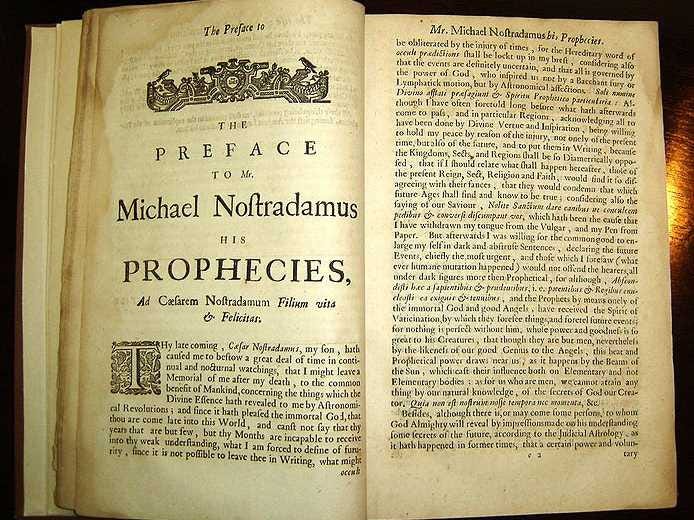
Background:
Astronomers have confirmed that the newly discovered interstellar object, 3I/ATLAS, is rapidly approaching its closest point to Earth in late 2025. Meanwhile, centuries-old writings from Nostradamus have resurfaced, predicting that “from the cosmos, a fireball will rise” — an ominous passage some believe describes a celestial event eerily similar to 3I/ATLAS’s current trajectory. As the end of 2025 draws near, scholars, scientists, and skeptics alike are asking the same question: could the “most famous seer in history” have foreseen the arrival of this interstellar visitor?
By Samuel A. Lopez, USA Herald
USA HERALD – In a year already marked by conflict, natural disasters, and global unrest, the convergence of prophecy and astronomy has taken center stage once again. Nostradamus, the 16th-century French astrologer and physician, is said to have predicted an apocalyptic event involving a “cosmic collision” or “fireball from the heavens” occurring near the end of 2025.
His quatrains, written in cryptic verse, have long been the subject of both fascination and fear. But the recent discovery of 3I/ATLAS — a hyperbolic interstellar object currently slicing through our solar system — has revived those centuries-old words with a renewed sense of urgency.
Discovered on July 1, 2025, by astronomers with the Asteroid Terrestrial-impact Last Alert System (ATLAS) survey, the object’s hyperbolic orbit immediately identified it as an interstellar visitor — only the third of its kind after ʻOumuamua in 2017 and 2I/Borisov in 2019. NASA’s Planetary Defense Coordination Office confirmed that 3I/ATLAS does not originate from within our solar system and will eventually leave it forever. Its closest approach to the Sun, known as perihelion, will occur around October 29, 2025, with its nearest pass to Earth estimated at 1.8 astronomical units — nearly 168 million miles — in mid-December.
While scientists insist there is no threat of collision, the object’s unusual structure and unpredictable light variations have prompted speculation far beyond scientific circles. Among those raising eyebrows is Harvard astrophysicist Avi Loeb, who has publicly stated that 3I/ATLAS “exhibits characteristics worth investigating for potential artificial origin.” His remarks — suggesting that the object could, in theory, be alien technology — have added yet another layer of intrigue to the story.
At the same time, historians revisiting Nostradamus’ writings point to one of his most chilling quatrains: “From the cosmos, a fireball will rise, a harbinger of fate, the world pleads. Science and fate in a cosmic dance, the fate of the Earth, a second chance.” The language, while poetic, has been interpreted by some to describe a celestial object approaching Earth — a phenomenon that, when paired with 3I/ATLAS’s timing, seems more than coincidental. Others dismiss this entirely, arguing that Nostradamus’ verses are deliberately vague, open to interpretation, and often misapplied to fit modern fears.
Still, the coincidences are difficult to ignore. Nostradamus’ prophecies for 2025 also reference “a long war ending” and “a plague returning,” both of which eerily parallel ongoing global conflicts and post-pandemic health crises. He further describes “a mysterious leader rising to form an aquatic empire,” a line that some theorists have tied — however loosely — to recent discussions about underwater UFOs, known as USOs (Unidentified Submerged Objects), reportedly tracked by naval intelligence agencies.
The European Space Agency (ESA), which has been closely monitoring 3I/ATLAS, confirmed through its scientific briefings that the object’s “anti-tail” — a rare optical feature that points toward the Sun instead of away from it — has puzzled observers. This anomaly, scientists say, occurs when dust particles trail behind a comet in such a way that sunlight reflects back toward the observer, creating the illusion of a reversed tail. But to some in the UFO and prophecy communities, the term “anti-tail” has become symbolic of something else entirely — a sign that nature itself is behaving contrary to expectation.
From a purely scientific perspective, NASA’s data paints a stable picture: 3I/ATLAS poses no existential danger. Its passage, while extraordinary, will not alter life on Earth. Yet history reminds us that moments like these — where the unknown meets the unexplainable — often ignite humanity’s deepest anxieties and imaginations. The alignment of Nostradamus’ most dire prediction with the arrival of an interstellar comet has created a perfect storm of intrigue, combining faith, science, and the supernatural in a way not seen since the approach of Halley’s Comet in 1910.
When I spoke with several astronomers off the record, their consensus was clear: there is no known evidence linking Nostradamus’ prophecy to 3I/ATLAS. But they acknowledged that public fascination with such coincidences plays a vital role in inspiring curiosity about space. As one astrophysicist told me, “Even if prophecy draws people in for the wrong reasons, it’s still encouraging them to look up — to ask questions, to wonder, to care.”
At the USA Herald, we take that same approach to truth. We don’t dismiss speculation outright — but we separate what can be proven from what remains to be explored. The data confirms that 3I/ATLAS is an interstellar object on a one-way path through our solar system. It also confirms that Nostradamus has been wrong before, often spectacularly so. Yet it’s the overlap — the poetic mystery, the cosmic coincidence — that keeps this story alive and worth telling.
As 2025 enters its final months, the world will be watching. If Nostradamus was right, we may be standing at the threshold of a new chapter in human history. If he was wrong, then 3I/ATLAS will pass silently into the dark, another visitor whose secrets we barely understood before it was gone. Either way, the lesson remains the same: truth often begins where wonder begins.


